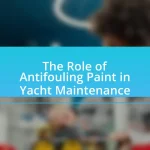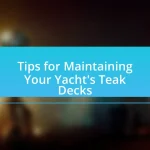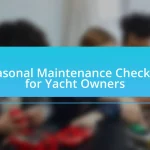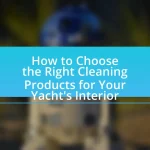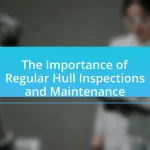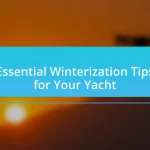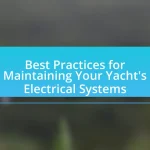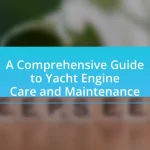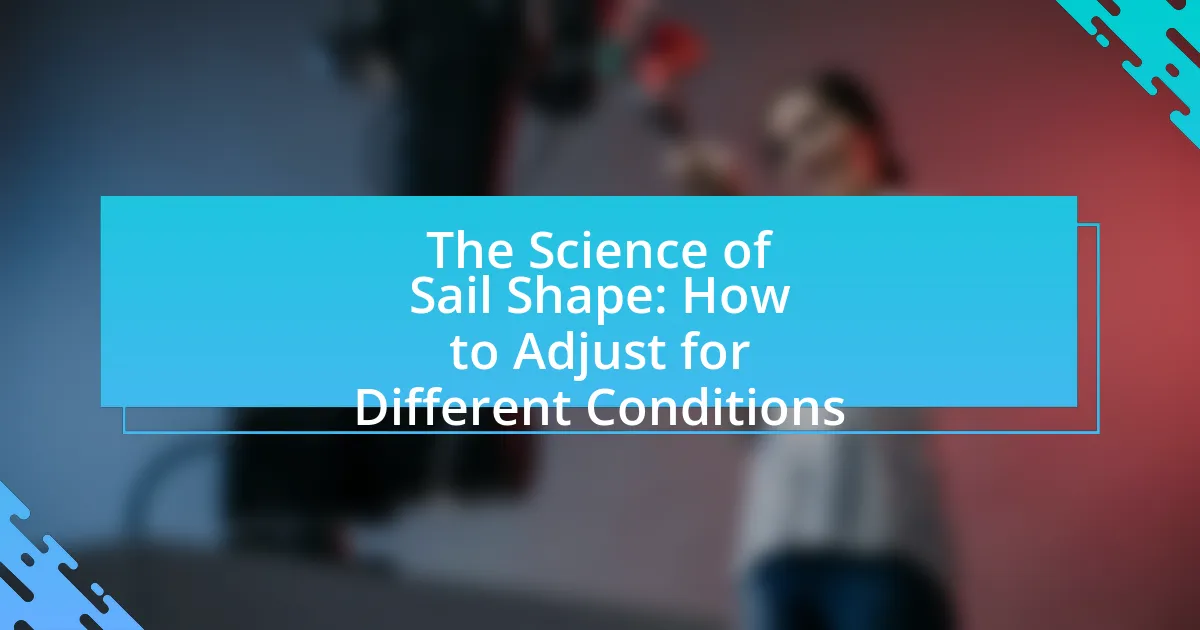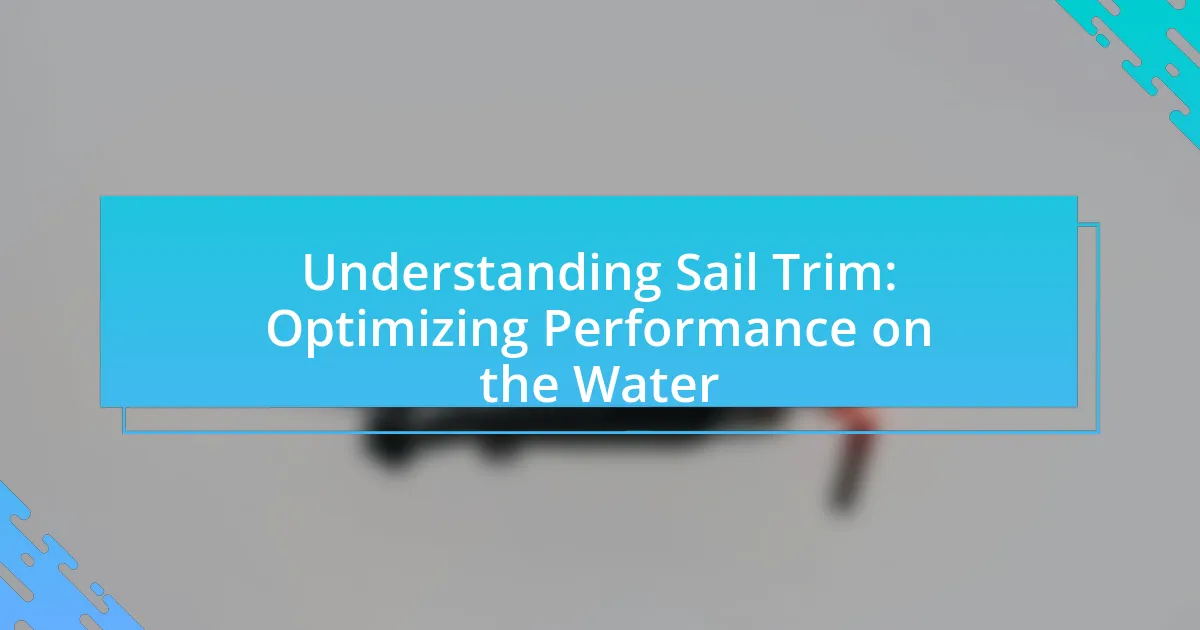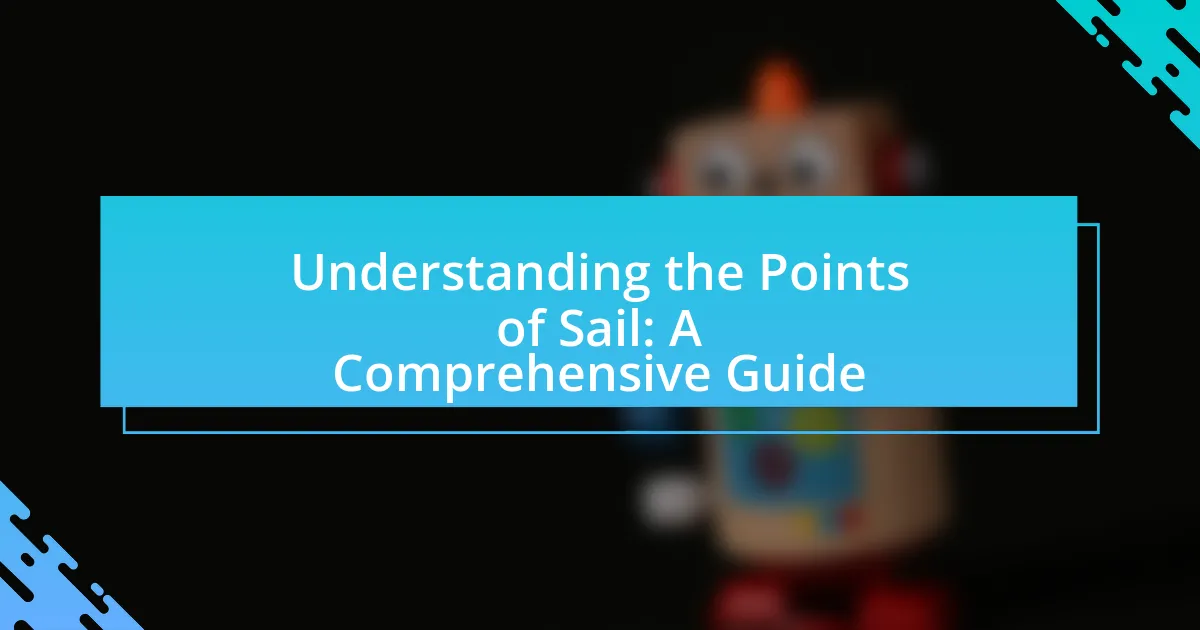Cruising under power involves using a boat’s engine for propulsion instead of relying solely on sails, particularly in insufficient wind conditions. This method enhances control over speed and direction, ensuring safety and efficiency during navigation. Key components of cruising under power include the engine, fuel system, navigation equipment, and electrical systems, all of which are essential for effective maneuverability. The article explores the differences between cruising under power and traditional sailing, factors influencing the decision to use an engine or sails, and best practices for optimizing performance while balancing both methods. Additionally, it highlights the environmental benefits of sailing and the importance of understanding wind patterns for improved navigation.
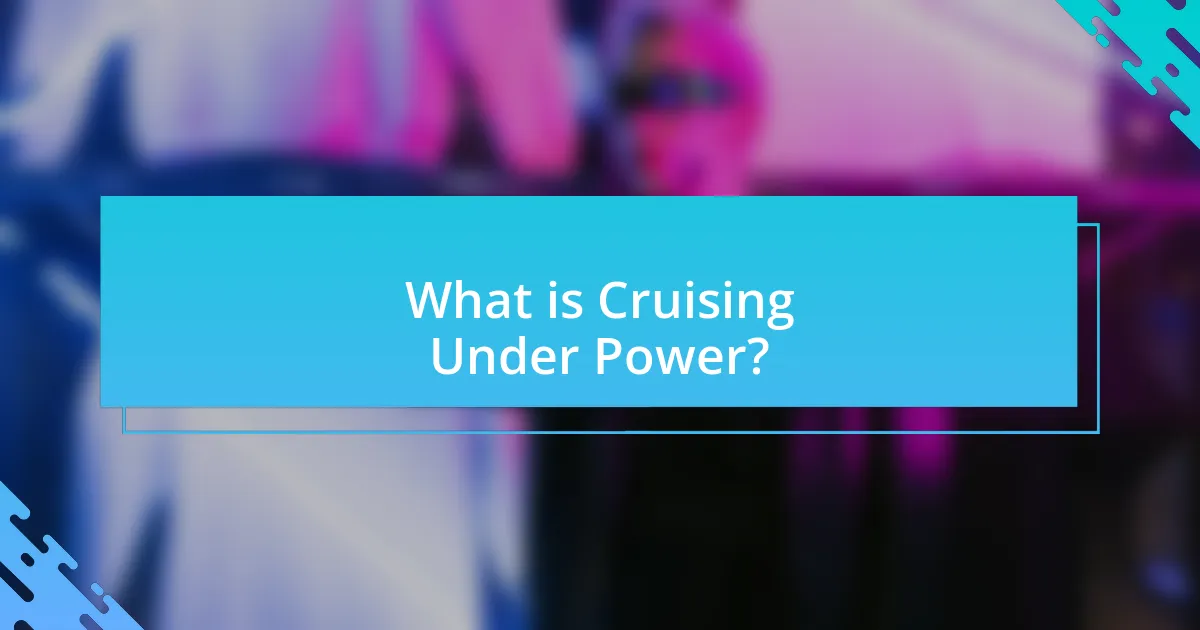
What is Cruising Under Power?
Cruising under power refers to the practice of using a boat’s engine to propel it through the water instead of relying solely on sails. This method is commonly employed when wind conditions are insufficient for sailing, allowing for greater control over speed and direction. The use of an engine can enhance safety and efficiency, particularly in challenging weather or when navigating through narrow channels.
How does cruising under power differ from traditional sailing?
Cruising under power differs from traditional sailing primarily in the method of propulsion. Cruising under power relies on an engine for movement, allowing for consistent speed and direction regardless of wind conditions, while traditional sailing depends on wind to fill sails, which can be variable and less predictable. This reliance on engine power enables cruisers to navigate more efficiently in calm or adverse wind conditions, whereas traditional sailing requires skill in managing sails and understanding wind patterns to achieve desired movement.
What are the key components of cruising under power?
The key components of cruising under power include the engine, fuel system, navigation equipment, and electrical systems. The engine provides the necessary propulsion, while the fuel system ensures a reliable supply of fuel for the engine’s operation. Navigation equipment, such as GPS and charts, is essential for determining the vessel’s course and position. Electrical systems power onboard devices and instruments, facilitating communication and safety. Each component plays a critical role in ensuring efficient and safe cruising under power, as evidenced by the reliance on engines for maneuverability in various conditions, particularly when wind conditions are unfavorable for sailing.
How does the engine play a role in cruising under power?
The engine is essential for cruising under power as it provides the necessary propulsion to move the vessel through the water when wind conditions are insufficient for sailing. In scenarios where sails cannot effectively harness wind energy, the engine ensures that the vessel maintains speed and direction, allowing for safe navigation and timely arrival at destinations. For instance, during calm weather or in narrow channels where maneuverability is critical, the engine’s reliability becomes crucial for maintaining control and avoiding hazards.
Why is it important to understand when to use your engine versus sails?
Understanding when to use your engine versus sails is crucial for optimizing performance and safety in maritime navigation. The engine provides reliable propulsion in calm or adverse wind conditions, ensuring that vessels can maintain speed and reach destinations on time. Conversely, using sails harnesses wind energy, which is more environmentally friendly and cost-effective, especially in favorable wind conditions. Knowledge of these dynamics allows sailors to make informed decisions, enhancing efficiency and reducing fuel consumption, ultimately leading to better resource management and a more enjoyable sailing experience.
What factors influence the decision to use the engine or sails?
The decision to use the engine or sails is influenced by factors such as wind conditions, speed requirements, fuel availability, and navigational constraints. Wind conditions dictate whether sailing is feasible; for instance, light winds may necessitate engine use to maintain speed. Speed requirements also play a crucial role; if a vessel needs to reach a destination quickly, the engine may be preferred. Fuel availability is another critical factor; if fuel is limited, sailing becomes a more viable option. Lastly, navigational constraints, such as currents or obstacles, can determine the most effective propulsion method.
How does weather impact the choice between engine and sails?
Weather significantly impacts the choice between using an engine and sails for navigation. In calm weather with light winds, sailors often rely on engines for efficient movement, as sails may not provide adequate propulsion. Conversely, in strong winds, sails become the preferred option, allowing vessels to harness wind power effectively while conserving fuel. Additionally, adverse weather conditions, such as storms, may necessitate engine use for better maneuverability and safety, as sails can become difficult to manage. Historical data shows that vessels often switch to engine power when wind speeds exceed 20 knots to maintain control and ensure safety.
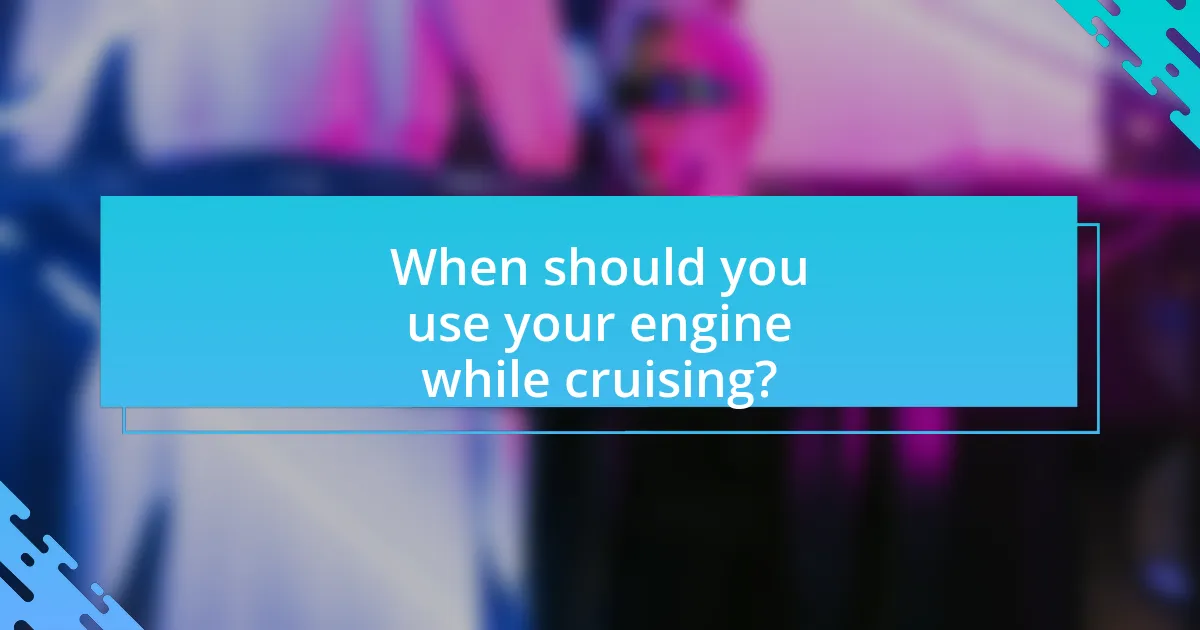
When should you use your engine while cruising?
You should use your engine while cruising when wind conditions are insufficient for sailing or when maneuvering in tight spaces, such as harbors or marinas. Insufficient wind can be defined as wind speeds below 5 knots, which typically do not provide enough power for effective sailing. Additionally, using the engine is essential for safety and control during docking or navigating through narrow channels, where precise handling is required.
What are the scenarios that necessitate engine use?
Engine use is necessitated in scenarios where wind conditions are insufficient for sailing, such as calm or light wind situations, or when navigating through narrow channels and harbors where precise maneuvering is required. Additionally, engines are essential for safety during emergencies, such as sudden weather changes or equipment failures, and for maintaining schedules in time-sensitive situations, like reaching a destination before nightfall or adverse weather conditions. These scenarios highlight the importance of engine use in ensuring safe and efficient navigation.
How does time sensitivity affect the decision to use the engine?
Time sensitivity significantly influences the decision to use the engine in cruising scenarios. When time constraints are present, such as needing to reach a destination by a specific deadline or avoiding adverse weather conditions, the engine is often preferred for its reliability and speed. For instance, studies indicate that vessels using engines can travel at an average speed of 5 to 7 knots, compared to 3 to 4 knots under sail, allowing for quicker arrivals. This urgency can lead to prioritizing engine use over sailing, especially in situations where timely arrival is critical for safety or logistical reasons.
What are the safety considerations for using the engine?
Safety considerations for using the engine include ensuring proper maintenance, monitoring fuel levels, and adhering to operational protocols. Regular maintenance prevents mechanical failures, which can lead to accidents; for instance, a study by the National Transportation Safety Board indicates that 70% of marine accidents are due to mechanical issues. Monitoring fuel levels is crucial to avoid running out of fuel, which can leave a vessel stranded. Additionally, following operational protocols, such as maintaining a safe speed and being aware of surrounding vessels, minimizes collision risks. These considerations collectively enhance safety while operating an engine in marine environments.
How can engine use enhance your cruising experience?
Engine use can enhance your cruising experience by providing reliable propulsion, allowing for greater control over speed and direction. When sailing conditions are unfavorable, such as during calms or adverse winds, the engine ensures that you can maintain your itinerary and reach your destination on time. Additionally, engines can assist in maneuvering in tight spaces, such as marinas or narrow channels, where precise handling is crucial. According to the U.S. Coast Guard, nearly 70% of recreational boating accidents occur due to operator inattention or improper navigation, highlighting the importance of engine use for safety and efficiency in various cruising scenarios.
What advantages does engine power provide in challenging conditions?
Engine power provides enhanced maneuverability and control in challenging conditions. In situations such as strong currents, high winds, or adverse weather, a powerful engine allows vessels to maintain a steady course and navigate safely. For instance, during storms, engine power can help counteract the effects of wind and waves, ensuring that the vessel remains stable and on track. Additionally, a robust engine can facilitate quicker responses to changing conditions, allowing for timely adjustments that can prevent accidents or damage.
How does engine use affect fuel consumption and efficiency?
Engine use directly impacts fuel consumption and efficiency by determining how much fuel is burned relative to the distance traveled. When engines operate at optimal RPMs, they achieve better fuel efficiency, often around 20-30% more efficient than at lower or higher RPMs. For instance, a study by the National Renewable Energy Laboratory found that operating at the engine’s peak torque range maximizes efficiency, reducing fuel consumption significantly. Conversely, excessive or inefficient engine use, such as idling or operating at high RPMs, leads to increased fuel consumption and decreased overall efficiency.
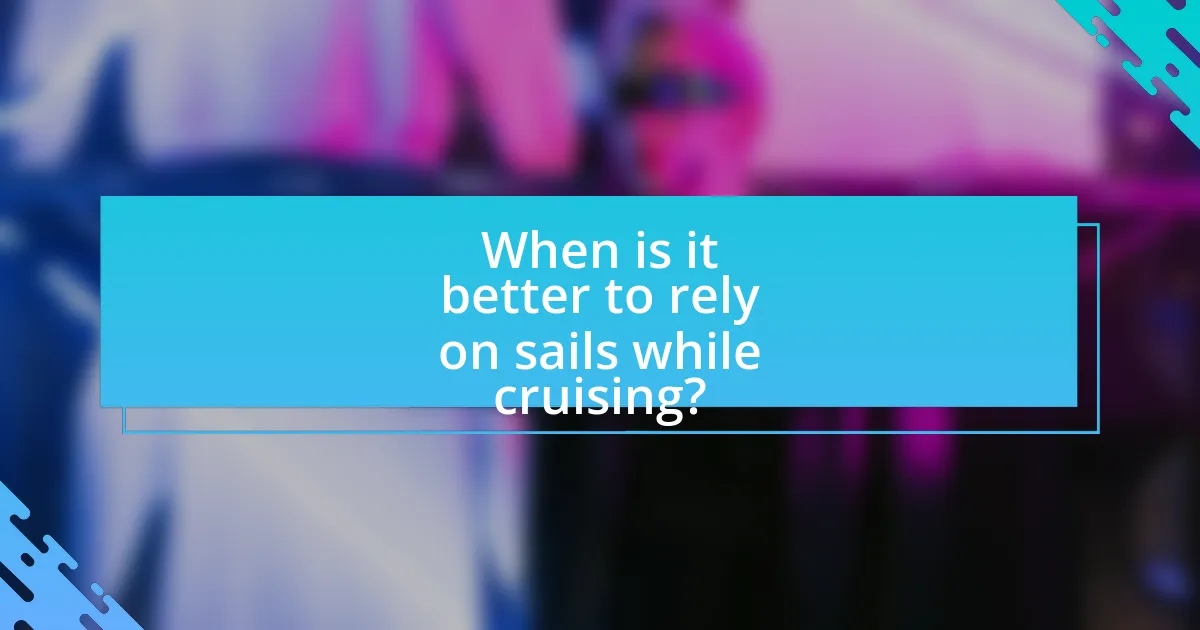
When is it better to rely on sails while cruising?
It is better to rely on sails while cruising when wind conditions are favorable, typically when wind speeds are between 10 to 20 knots. In these conditions, sailing can be more efficient than using an engine, allowing for better fuel conservation and a quieter experience. Additionally, sailing is advantageous in open waters where the wind direction aligns with the desired course, enabling optimal speed and maneuverability. Studies show that sailing can reduce fuel consumption by up to 50% compared to motoring, making it a more sustainable choice when conditions permit.
What are the benefits of sailing over using the engine?
Sailing offers several benefits over using an engine, primarily including environmental sustainability, cost-effectiveness, and enhanced sailing experience. Sailing harnesses wind power, which reduces fuel consumption and minimizes carbon emissions, contributing to a healthier marine ecosystem. Additionally, sailing eliminates fuel costs, making it a more economical choice for long-distance cruising. The experience of sailing also fosters a deeper connection with nature and the elements, providing a sense of tranquility and adventure that engine-powered travel often lacks. These advantages highlight why many sailors prefer to rely on sails whenever conditions permit.
How does sailing contribute to environmental sustainability?
Sailing contributes to environmental sustainability by utilizing wind as a primary source of propulsion, which significantly reduces reliance on fossil fuels. This reduction in fuel consumption leads to lower greenhouse gas emissions and minimizes air and water pollution associated with engine use. According to the International Maritime Organization, sailing vessels can reduce carbon emissions by up to 90% compared to motorized boats when operating under sail. Additionally, sailing promotes awareness of marine ecosystems and encourages practices that protect ocean health, such as responsible anchoring and waste management.
What are the advantages of sailing in terms of experience and enjoyment?
Sailing offers unique advantages in terms of experience and enjoyment, primarily through the connection to nature and the sense of adventure it provides. The experience of harnessing wind power fosters a deeper appreciation for the environment, as sailors engage with the elements, feeling the wind and water in a way that motorized boating does not allow. Additionally, sailing promotes a sense of freedom and exploration, as navigating open waters can lead to discovering new destinations and enjoying scenic views. Studies have shown that activities like sailing can enhance mental well-being, reducing stress and increasing overall happiness, which further underscores the enjoyment factor associated with this activity.
How can you optimize your sailing performance?
To optimize your sailing performance, focus on adjusting sail trim, maintaining proper weight distribution, and understanding wind patterns. Proper sail trim ensures that the sails are shaped correctly to harness wind effectively, which can increase speed and efficiency. Weight distribution affects the boat’s balance and stability; positioning crew and gear appropriately can enhance performance. Additionally, understanding wind patterns allows sailors to make informed decisions about when to use sails versus the engine, maximizing the benefits of both methods. For instance, studies show that optimizing sail trim can improve speed by up to 20% in certain conditions, demonstrating the importance of these techniques in enhancing overall sailing performance.
What techniques can improve sail efficiency?
To improve sail efficiency, sailors can utilize techniques such as optimizing sail trim, adjusting sail shape, and employing the correct sail plan for wind conditions. Optimizing sail trim involves adjusting the angle of the sails relative to the wind direction to maximize lift and minimize drag. Research indicates that proper sail trim can increase speed by up to 20%. Adjusting sail shape, through the use of battens and reefing, allows for better performance in varying wind conditions, ensuring that the sails maintain an aerodynamic profile. Additionally, selecting the appropriate sail plan, such as using a headsail or spinnaker based on wind strength and direction, can significantly enhance overall sailing efficiency.
How does understanding wind patterns enhance sailing?
Understanding wind patterns enhances sailing by allowing sailors to optimize their routes and improve efficiency. By analyzing wind direction and speed, sailors can adjust their sails to harness the wind effectively, leading to faster and more controlled navigation. For instance, knowledge of prevailing winds can help in planning a course that minimizes tacking and maximizes speed, as seen in competitive sailing where strategic wind utilization can result in significant time advantages.
What are the best practices for balancing engine and sail use?
The best practices for balancing engine and sail use involve assessing wind conditions, optimizing sail trim, and using the engine strategically to maintain speed and direction. Sailboats should primarily rely on sails when wind speeds are adequate, typically above 5 knots, to maximize fuel efficiency and reduce emissions. In light winds or when maneuvering in tight spaces, the engine should be used to maintain control and speed. Additionally, adjusting the sail trim according to wind direction and strength enhances performance, allowing for a smoother transition between engine and sail use. Monitoring fuel consumption and engine performance can also inform decisions on when to switch between the two, ensuring an efficient cruising experience.
How can you develop a strategy for effective cruising under power?
To develop a strategy for effective cruising under power, prioritize fuel efficiency and optimal speed management. This involves selecting the right cruising speed, typically between 6 to 8 knots for most vessels, which balances fuel consumption and travel time. Additionally, monitor weather conditions and currents to adjust your course and speed accordingly, ensuring minimal resistance and maximizing efficiency. Utilizing tools such as GPS and marine charts can aid in planning routes that avoid adverse conditions, further enhancing fuel economy. Studies indicate that cruising at optimal speeds can reduce fuel consumption by up to 30%, demonstrating the importance of speed management in effective cruising under power.
What common mistakes should be avoided when deciding between engine and sails?
When deciding between engine and sails, a common mistake is underestimating the importance of wind conditions. Many sailors fail to assess the wind strength and direction adequately, leading to inefficient sailing or reliance on the engine when sails could suffice. Additionally, neglecting to consider fuel consumption and the environmental impact of engine use can result in unnecessary costs and ecological harm. Research indicates that using sails can reduce fuel consumption by up to 50% in favorable conditions, highlighting the need for informed decision-making based on specific sailing scenarios.
What tips can help you make informed decisions while cruising?
To make informed decisions while cruising, assess wind and weather conditions regularly. Understanding these factors allows for optimal use of sails or engine power, enhancing safety and efficiency. For instance, the Beaufort scale provides a reliable method to gauge wind strength and its effects on sailing conditions, helping sailors decide when to switch from sails to engine power. Additionally, monitoring fuel levels and engine performance ensures that you have sufficient resources for your journey, which is crucial for planning and safety.

